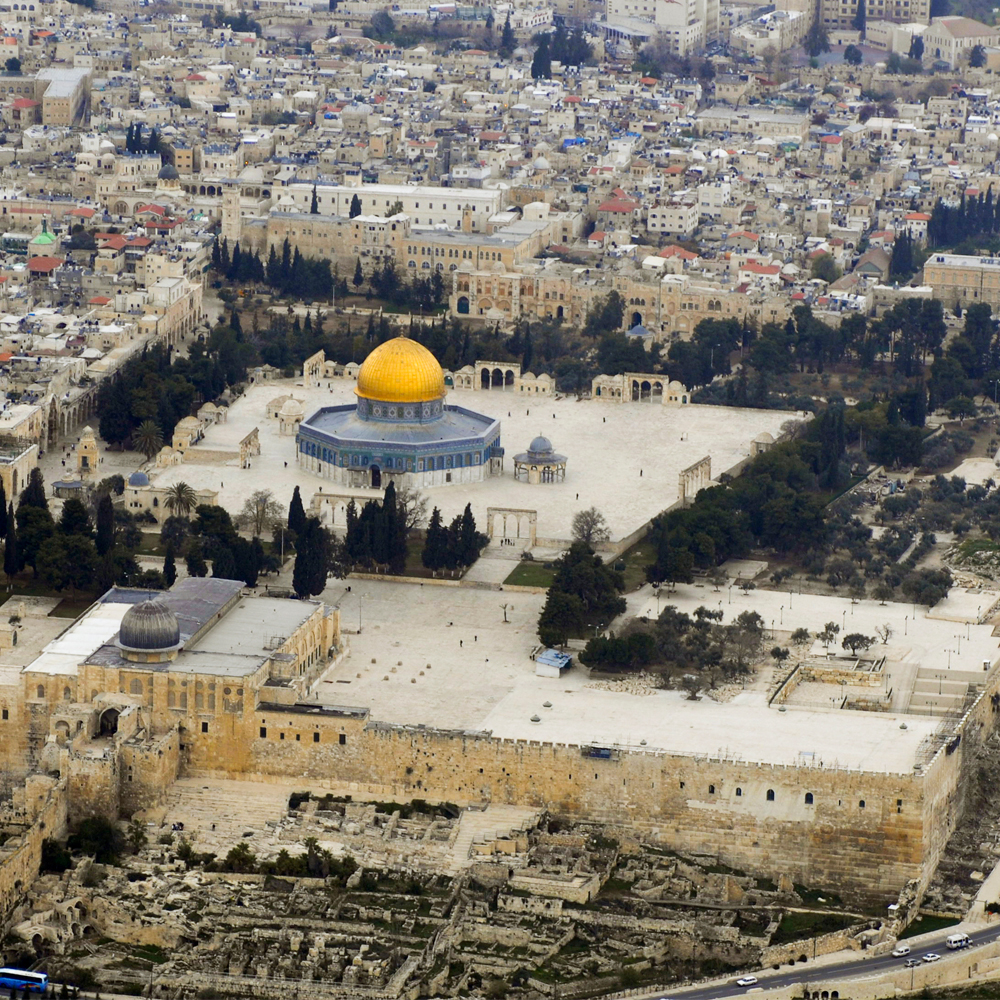Recently, as settler groups visited the Temple Mount, we reiterated the fact that Jewish law forbids these visits. Some have asked why.
The Torah says, “Anyone who touches a dead human body and does not purify himself with the Red Heifer, has defiled the Temple of G-d, and his soul will be cut off from Israel, for the waters of purification were not sprinkled upon him, he remains defiled; his defilement is still upon him.” (Numbers 19:13)
The Jewish people have not had a Red Heifer for about 1700 years. Therefore, any Jew who has ever been to a funeral, a hospital or a cemetery, or otherwise accidentally been in the same building with a dead body (that is, all of us) are permanently defiled. We are forbidden to enter the Temple, and if we did, we would be liable to “kareis” (being cut off), one of the most severe Divine punishments.
Although the Temple no longer exists, the Rambam rules (Beis Habechirah 6:14) that the holiness of the Temple site still continues today, and so the prohibition on a defiled person entering is still in force. The Raavad disagrees; however, the Magen Avraham (Orach Chaim 561:2) rules that the halacha is like the Rambam. The Mishnah Berurah (561:5) concurs with this ruling.
The punishment of kareis applies only to the site of the Temple Courtyard, a rectangle of 135 by 187 cubits (Mishnah Midos 2:6). However, under Rabbinic law a person defiled by a dead body is forbidden to enter even the Cheil, a much broader area that surrounded the Courtyard on all sides (Mishnah Keilim 1:8).
A person defiled by a dead body may enter the parts of the Temple Mount not included in the Cheil and Courtyard. However, if he has other types of defilement, he is forbidden to enter any part of the Temple Mount. These other defilements can be cleansed by immersing in a mikveh, a ritual bath.
The problem is that we do not know exactly where, in today’s Temple Mount compound, the various parts of the Temple once stood. The issue has been hotly debated by Torah scholars and archaeologists, and there is no clear consensus.
Looking back to history, the longstanding precedent was that Jews did not enter the Temple Mount.
For example, the Ramban came to the Holy Land in 1267 and wrote back to his son in Spain,
Give my regards to my student R’ Moshe ben Shlomo, your mother’s brother’s son, and tell him that I went up on the Mount of Olives which is opposite the Temple Mount, with only the Valley of Yehoshafat intervening, and there, opposite the Temple, I cried as I read the prayers that he wrote.
Ishtori Haparchi came to the Holy Land in 1322 and compiled his famous work Kaftor Vaferach, the first Hebrew book on the geography of Eretz Yisroel. In Chapter 6 he writes:
And now that, due to our sins, we are outside, we can come near for prayer and prostration at the walls of the Temple Mount. This is what the people do: they approach the walls and pray to G-d in front of the gates
Rabbi Yaakov Ettlinger (1798-1871) in his Binyan Tzion (1:2) concurs that the halacha follows the Rambam and argues that even the Raavad is uncertain and would agree that it is forbidden to enter today.
When violent conflict over the Temple Mount first erupted in 1929, Rabbi Yosef Chaim Sonnenfeld, then chief rabbi of the Orthodox community of Jerusalem, issued a touching appeal to the Arab population to live in peace with the Jewish community, assuring them that the Jewish people had no secret plans to take the Temple Mount or any other Arab properties. He wrote:
he Jews do not want, in any way, to take that which isn’t theirs. And they certainly don’t want to contest the rights of the other inhabitants to the places held by them which they regard with honor and consider holy. And in particular there is no foundation to the rumor that the Jews want to acquire the Temple Mount. On the contrary, from the time that, because of our sins, we were exiled from our land, and our Holy Temple was destroyed, and we have been lacking the purity required by the Torah, it is forbidden for any man of Israel to set foot upon the grounds of the Temple Mount, until the coming of the righteous moshiach, who with the spirit of the L-rd, which will hover over him, will rule righteously, for the good of all creation, and will return to us the purity required by the Torah.
The article was printed in Arabic in the leading Arab newspaper. Click here to read the entire article.
There are those who think they are smarter and have figured out exactly where the Temple Courtyard once stood. They immerse themselves in a mikveh and visit only the outskirts of the Mount. But do they really think everyone on these tours (including non-religious men, women and children, as well as Israeli police and soldiers) are so careful?
Furthermore, we all know that Jewish visits to the Temple Mount reignite the Israeli-Palestinian conflict. In the words of Rav Moshe Sternbuch, leading posek of our generation, on November 20, 2014:
Those religious Jews with a kippah on their heads who enter the Temple Mount, violating a prohibition that carries the penalty of kareis, dramatically increase the hatred of the Muslims toward us, because they are invading a site that the Muslims consider holy, and in this manner their war against us becomes a religious war. They incite their people against us, to the point that many of them are ready to commit suicide attacks on us. These religious Jews violate the oath that G-d imposed on the Jewish people not to provoke the nations of the world.
We hope that the participants in these visits will take this information to heart, and adopt a more cautious and G-d-fearing attitude to the most sacred site in Judaism.

